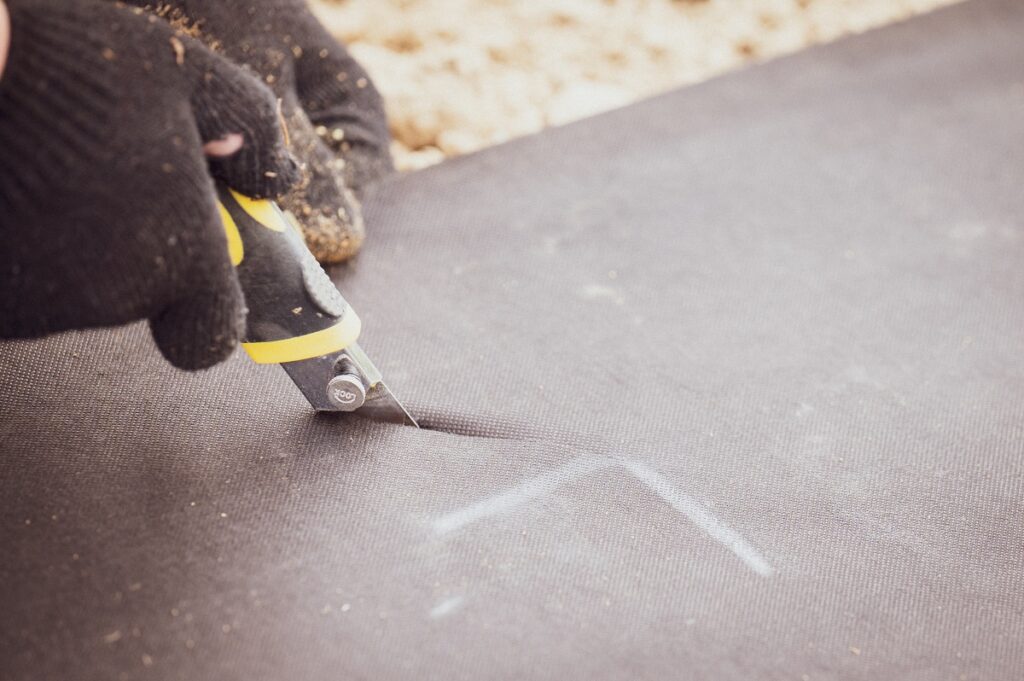
How do I lay agro-textile fabric under already growing thuyas? Before answering this question, it is worth considering the preparation of the ground, which is a very important and not too difficult task. To begin with, it is worth thoroughly clearing the area of any weeds that may interfere with the further development of the plants. The removal of unwanted plants is best done by hand, taking care to pull them out along with their roots to prevent them from growing again. A garden spade or rake can be used for the deeper parts of the soil.
Once the area has been thoroughly cleared, care should be taken to level the ground so that the agro-textile adheres evenly to the ground. Unevenness can cause the fleece to move, which will affect its effectiveness. A level ground will not only make it easier to lay the nonwoven fabric, but will also help to retain moisture and prevent soil erosion. Remember that proper soil preparation is the foundation for success when using agro-textile.
How do I lay agro-textile under plants that are already growing? By choosing the right agro-textile. There are different types of agro-textile on the market, which differ in thickness, colour and functionality. The most common types are 50 g/m² and 100 g/m² agro-textile. The lighter version (50 g/m²) is suitable for protecting against weeds and keeping the soil moist, which is crucial for young tules. In contrast, the thicker agro-fibre (100 g/m²) provides better protection against stronger weeds and better soil stabilisation, which is beneficial for already well-rooted plants.
When choosing the right agro-textile, it is also worth paying attention to the colour. Black agro-textiles provide excellent protection from the sun, which is beneficial in colder regions. White agro-textiles, on the other hand, reflect light, which can be beneficial in warmer climates so as not to overheat the roots of the tuja. It is worth investing in a higher quality material that is resistant to mechanical damage and UV radiation.
How do I lay the fleece under the thuyas? This work requires, above all, a high degree of precision and care. After thoroughly cleaning and levelling the ground, the first step is to prepare the appropriate pieces. It is recommended that each piece of fleece is large enough to cover the area around each tuja. Next, small ‘X’ shaped holes are cut around the base of the tui to allow the plant to pass through the material.
The next step is to spread the fleece evenly on the ground, making sure that it adheres well to the soil surface. It is a good idea to use garden pins or small stones to fix the fleece to the ground and prevent it from moving. These pins should be spaced evenly across the surface of the fleece, about 25–30 cm apart, which will ensure that the agro-fleece adheres firmly to the ground. Remember to overlap the edges of the fleece to avoid weed infiltration. A nonwoven agro-textile laid in this way will provide adequate protection from weeds and moisture retention, which is crucial for the healthy growth of the tuja. Finally, you can cover the non-woven fabric with a layer of bark or gravel to improve its aesthetics and further protect it from erosion. Stones can be placed around the edges and at the joints of the agro-textile to further hold it in place.
It is worth remembering that a properly fixed agro-textile will help to retain moisture and protect against weeds. By choosing a high-quality agro-textile, we will be sure that our material will be resistant to damage and UV radiation, which will further increase its durability. Thanks to these methods, knowing how to lay the agro-textile under the thuyas will become a solid foundation for healthy and lush plant growth.
Once the agro-textile fleece has been laid under the growing thuyas, the key aspect is the proper care of the plants and the care of the agro-textile fleece itself. The thuyas need to be watered regularly, especially in the first few weeks after the fleece has been applied, in order to ensure the right level of moisture in the soil and to encourage the plants to take root. It is advisable to water in the early morning or late afternoon to avoid water evaporation. It is also a good idea to take care of the layer of bark or gravel with which you cover the agro-textile to prevent it from shifting.
During the season, the condition of the agro-textile should be checked regularly to ensure that it still adheres well to the ground. Any damage or displacement of the fleece can lead to weed infiltration, so it is worth repairing it quickly. It is also necessary to monitor the health of the tuja, pruning dry or damaged branches and fertilising the plants with appropriate preparations to support healthy growth. Maintaining consistent care of your tui and taking care of your agro-fertiliser will ensure that your garden looks beautiful and lush.